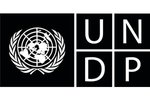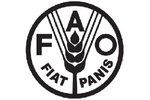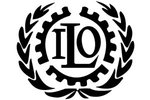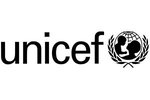The Paradox of Expertise in International Development
Catalpa Director and Co-Founder, David Roach, reflects on the limitations of the expert-centric model common in the international development sector.
In the world of international development, the presence of numerous experts is a common occurrence. However, the term 'expert' isn't always one that sits comfortably with me. This discomfort may stem from a lingering sense of imposter syndrome or from the realisation that the more you learn, the more you understand that true expertise is perhaps unattainable.
The Impact of "Expertise"
As members of a development organisation, we must constantly grapple with what it truly means to be an expert. For many development initiatives, we know that fundamental to their ongoing success is 'buy-in.' The concept of buy-in emphasises that understanding and ownership of initiatives and ideas should rest squarely on the shoulders of those most affected by the problem at hand.
When individuals or groups buy-in, they are not just passively agreeing but actively supporting and participating in the idea, decision, or plan. They are motivated and committed to its success because they understand the reasons behind it, believe in its value, and often have had the chance to contribute their ideas or perspectives to its formation.
In this context, it's worth reflecting on the role of the expert in International Development, and the design processes and methodologies that are used commonly, and how they can be counter-productive.
The approach of an individual expert solving a problem involves a singular perspective, shaped by their own expertise and experience. While valuable, this perspective might overlook certain aspects of the issue, including cultural nuances, local specifics, or practical implications. What’s more, a solution proposed by an expert might not gain acceptance from those affected, particularly if these individuals weren't engaged meaningfully during the decision-making process.

If we don’t get the balance right, expertise can stifle the ideas of others and reinforce centralised, isolated decision-making processes that exclude those who should be part of the journey.

Co-Design: A Pathway to Buy-In
So, how do we achieve this buy-in? For us, the answer lies in the co-design process. This approach encourages people to contribute and incorporate their ideas, to build together, rather than simply producing a recommendation paper after a few consultations.
We utilise a number of Human Centred Design / Design Thinking facilitation methodologies to build ideas collaboratively, achieve consensus, empathy and buy-in.
For us, co-design, or collaborative design, and design workshops serve as effective tools for gathering ideas and fostering buy-in among stakeholders. These processes prioritise active participation, enabling everyone involved to contribute their insights, knowledge, and perspectives. Participants are not just passive receivers of information; instead, they're co-creators of solutions.
Design workshops facilitate brainstorming, problem-solving, and ideation in a structured, interactive environment. By collectively analysing problems and developing solutions, a shared understanding and ownership of the project are cultivated. This approach inherently builds buy-in, as stakeholders feel their voices are heard and valued. Their involvement in shaping the outcome fosters a sense of commitment and motivation, significantly improving the likelihood of successful implementation and long-term sustainability. In essence, co-design transforms the traditional top-down approach into a collaborative journey, making problem-solving a shared responsibility.
Building together creates buy-in, just build some Ikea furniture
Consider the 'IKEA effect,' a term coined by behavioural economists. It was observed that people valued the IKEA furniture they had assembled themselves more than a pre-assembled piece. This simple observation uncovers a fundamental truth about human behaviour: people value things they have a hand in creating.
The same phenomenon was experienced with instant cake mixes. Initially, these mixes contained powdered egg and required the simple addition of water. However, consumers found it unsatisfying, as it felt more like taking a shortcut than actual cooking. Quite simply, it wasn’t their cake. The solution? Remove the powdered egg and add a few more steps. This makes the process more active and engaging, and leaves people with a sense of satisfaction and achievement in their baking abilities.
A Shift from Expertise to Engagement
Co-design, co-creation and building together are fundamental elements of buy-in. It also helps shift the power away from the expert solving the problem, to facilitating a solution with the problem owners.
Throughout my career, I have met numerous experts with a clear understanding of the challenges ahead and a proposed path forward. However, they often lack skin in the game. They are not the problem owners; the benefits of change or the consequences of maintaining the status quo do not directly impact them. They come and go, and it is easy to simply apply what worked elsewhere to very different contexts.
There is a pressing need to move away from the notion of the expert who holds all the answers. While this model may be appealing and help to construct a simpler narrative to soothe our collective need for reassurance, it's not always the most effective approach. Instead, we should favour participatory, co-designed, and even slightly chaotic processes of engagement, guidance, and inclusion.
At a recent conference, a disability advocate said, “consultation is not-co-design”. The design methodologies need to shift away from just talking or ‘consulting’ to building together and enabling others to meaningfully participate in the creation of the solution to their own problems.
Building together is what truly creates buy-in. Let's step away from the 'instant cake mix' mentality and embrace the messier, yet more rewarding process of co-creation in international development.
This article is authored by David Roach, Founder and Director of Catalpa International. Connect with David on Linkedin.














